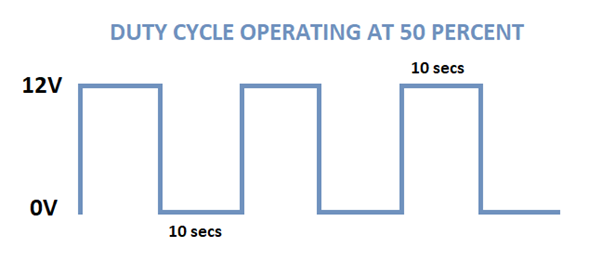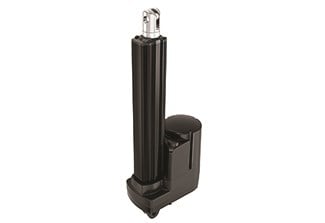As with many high-running electronic devices, linear actuators have a duty cycle. That is, an ‘on’ period followed by down-time. Essentially, they need a rest. Depending on the linear actuator, this duty cycle can vary, but the only way to increase it is to reduce the load and/or speed.
The ratio is normally expressed as a percentage:

Linear actuators convert nonlinear energy into linear motion, using energy forces such as heat, electricity or air pressure. The purpose of a duty cycle is to provide recovery time from both friction and the unused energy given off, which presents as heat. This ensures the machine remains operating for its full lifespan.
Why does it matter?
A duty cycle’s main purpose, therefore, is to prevent a linear actuator from overheating and becoming warped. Consequences of that are a loss of power or functionality, with the risk of burning the motor. This can not only create long-term damage, but it can act as a fail point within a production structure, as this ScienceDaily article outlines:
‘If, for example, the linear actuator used to precisely position a car body in front of an assembly robot is damaged, the robotic arm will no longer be able to position the car door as exactly as it normally does. The result is a door that is misaligned. Or, to take another example, the sudden failure of a machine component due to material fatigue could well result in the complete shutdown of a production line.’
How to calculate duty cycle
This calculation is for the maximum capacity of a duty cycle. This is the duty cycle of a linear actuator operating in perfect conditions. Do not exceed this or use a linear actuator in non-ideal conditions without accounting for that fact. Yes, you may achieve short-term efficiency, but over the long-term the machine will be damaged. Just as you wouldn’t overwork your engineers, don’t overwork your linear actuators.
Calculating the duty cycle for your linear actuator is very simple. You need to:
- Take the amount of time the component is running.
- Divide this by the total amount of time it takes to complete a cycle.
- Multiply the resulting decimal point by one hundred to get the percentage ‘on’ time.
- Optionally, you can take the remainder of this percentage from one hundred to get the cooling time as well.
For example:
The actuator extends for 60 seconds and retracts for 35 seconds. It pauses for 70 seconds.
60 + 35 = 95
60 + 35 + 70 = 165
95/165 = 0.58
0.58 x 100 = 58%
The linear actuator has a duty cycle of 58 percent. The cooling time is therefore 42 percent.
Take note – other factors are involved
Although you now know the duty cycle for your linear actuator, you must remember to allow for contingencies. Has your linear actuator been in use for a long time or is it brand new? What is the ambient temperature? Is there significant dust or moisture in the air? Are you operating within the recommended voltage? Is your linear actuator side-loaded at all?
We would suggest that you leave a buffer-zone because so many things can affect performance. For example, if the duty cycle is 35 percent, operate at around 30-32 percent. That way, you will safely avoid damaging your device.
Contact Our Engineering Team For A Free Application Analysis
North America - EN







